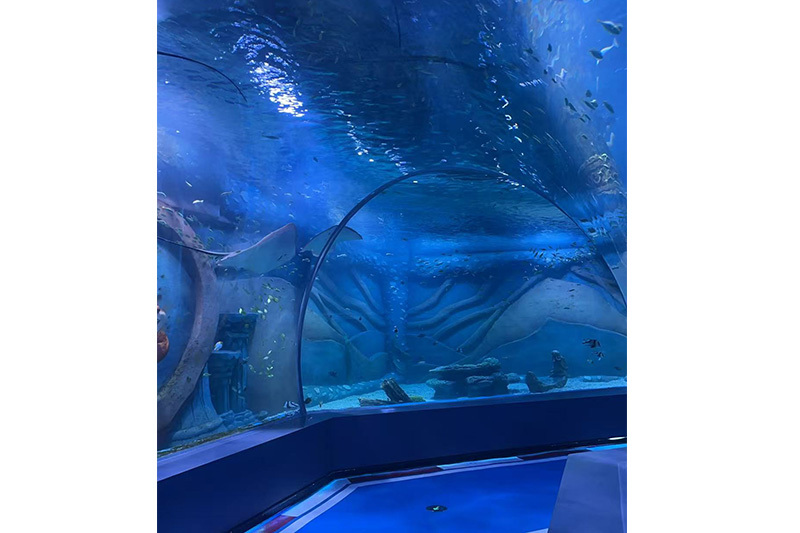
Understanding Acrylic Channel Boards: Versatile Solutions for Your Projects
Acrylic channel boards, also known as acrylic sheets or panels, are made from polymethyl methacrylate (PMMA), a transparent thermoplastic that is often utilized as a lightweight and shatter-resistant alternative to glass. Their unique combination of properties makes them an ideal choice for a wide range of applications in various industries, particularly in the chemical and plastic sectors. One of
Release time:
2025-11-06
Acrylic channel boards, also known as acrylic sheets or panels, are made from polymethyl methacrylate (PMMA), a transparent thermoplastic that is often utilized as a lightweight and shatter-resistant alternative to glass. Their unique combination of properties makes them an ideal choice for a wide range of applications in various industries, particularly in the chemical and plastic sectors.
One of the standout features of acrylic channel boards is their exceptional clarity and optical quality. They allow for high levels of light transmission, making them suitable for applications where visibility is crucial. This characteristic is particularly beneficial for displays, signage, and protective barriers in commercial settings. Additionally, the vibrant colors and finishes available with acrylic channel boards can enhance the aesthetic appeal of any project.
In terms of physical properties, acrylic channel boards are known for their outstanding impact resistance. Unlike glass, which can shatter upon impact, acrylic is much more resilient, thus providing a safer option for environments where breakage could pose risks. This strength also translates to greater longevity, making acrylic a cost-effective material in the long run.
The ease of fabrication is another advantage of acrylic channel boards. They can be easily cut, drilled, and shaped using standard tools, allowing for customization to fit specific design requirements. This flexibility is particularly advantageous for businesses and industries that require bespoke solutions. Whether you need specific dimensions or intricate designs, acrylic channel boards can be tailored to meet your needs.
Moreover, acrylic exhibits excellent weather resistance and UV stability, making it suitable for both indoor and outdoor applications. This resistance to environmental factors ensures that the material maintains its properties and aesthetic appeal over time, which is crucial in applications like outdoor signage or architectural features.
Another important aspect to consider is the environmental impact of acrylic channel boards. Many manufacturers are focusing on producing acrylic materials with sustainability in mind, including processes that reduce waste and energy consumption during production. Additionally, acrylic is recyclable, which contributes to its appeal in industries looking to adopt more sustainable practices.
In conclusion, acrylic channel boards offer a blend of strength, clarity, and versatility that makes them suitable for a wide array of applications in the chemical and plastic industries. Their ease of fabrication, aesthetic potential, and durability are key factors that can enhance any project, providing a reliable solution for both functional and decorative needs. Whether you are considering acrylic channel boards for signage, protective barriers, or custom projects, understanding these properties will help you make informed decisions that align with your objectives.
One of the standout features of acrylic channel boards is their exceptional clarity and optical quality. They allow for high levels of light transmission, making them suitable for applications where visibility is crucial. This characteristic is particularly beneficial for displays, signage, and protective barriers in commercial settings. Additionally, the vibrant colors and finishes available with acrylic channel boards can enhance the aesthetic appeal of any project.
In terms of physical properties, acrylic channel boards are known for their outstanding impact resistance. Unlike glass, which can shatter upon impact, acrylic is much more resilient, thus providing a safer option for environments where breakage could pose risks. This strength also translates to greater longevity, making acrylic a cost-effective material in the long run.
The ease of fabrication is another advantage of acrylic channel boards. They can be easily cut, drilled, and shaped using standard tools, allowing for customization to fit specific design requirements. This flexibility is particularly advantageous for businesses and industries that require bespoke solutions. Whether you need specific dimensions or intricate designs, acrylic channel boards can be tailored to meet your needs.
Moreover, acrylic exhibits excellent weather resistance and UV stability, making it suitable for both indoor and outdoor applications. This resistance to environmental factors ensures that the material maintains its properties and aesthetic appeal over time, which is crucial in applications like outdoor signage or architectural features.
Another important aspect to consider is the environmental impact of acrylic channel boards. Many manufacturers are focusing on producing acrylic materials with sustainability in mind, including processes that reduce waste and energy consumption during production. Additionally, acrylic is recyclable, which contributes to its appeal in industries looking to adopt more sustainable practices.
In conclusion, acrylic channel boards offer a blend of strength, clarity, and versatility that makes them suitable for a wide array of applications in the chemical and plastic industries. Their ease of fabrication, aesthetic potential, and durability are key factors that can enhance any project, providing a reliable solution for both functional and decorative needs. Whether you are considering acrylic channel boards for signage, protective barriers, or custom projects, understanding these properties will help you make informed decisions that align with your objectives.
Acrylic channel board
Latest information





